Though a rarity in aviculture, the reed warbler is a native softbill with bags of character that would repay study in private collections, says BILL NAYLOR, and urges fanciers to follow the late Frank Meaden’s pioneering success.

THE reed warbler (Acrocephalus scirpaceus) has been called our plainest brownest warbler. It’s certainly drab when compared to typical warblers like the blackcap (Sylvia atricapilla), whitethroat (S. communis) and the willow warbler (Phylloscopus trochilus) – the UK’s most common warbler.
The reed warbler shares the genus Acrocephalus with more than 30 similar species. It has evolved mousy brown plumage for good reason, for it spends all of its life among one type of vegetation: reed beds. And like bitterns and bearded tits (Panurus biarmicus) it prefers specifically the long-stemmed feathery fronds of Phragmites reeds.
It is a late summer visitor and arrives in the UK in April or May from its winter stay in Africa. This species sets up home in reed beds, mainly in central and southern areas with a concentration in East Anglia. Its specific name scirpaceus means “reed,” and the country names of marsh reedling, fen reedling, rush warbler and water sparrow aptly describe this elusive bird that rarely strays outside of the reed thickets.
Before the revision of the warbler family Sylviidae, there were nearly as many warblers as there are parrot species. Warblers have always fallen under the radar. Even among birders and ornithologists, warblers are often considered hard work. Many are so similar that even in the hand they are difficult to identify. All of the 14 breeding British species can be confused. Before the pioneering discoveries of naturalist Gilbert White, the willow warbler (known then as the willow wren) was considered to be the same species as the wood warbler (P. sibilatrix) and chiffchaff (P. collybita). White also discovered that the sedge (A. schoenobaenus) and reed warbler were two different species. But people still have trouble telling them apart.
Esta historia es de la edición February 22,2017 de Cage & Aviary Birds.
Comience su prueba gratuita de Magzter GOLD de 7 días para acceder a miles de historias premium seleccionadas y a más de 9,000 revistas y periódicos.
Ya eres suscriptor ? Conectar
Esta historia es de la edición February 22,2017 de Cage & Aviary Birds.
Comience su prueba gratuita de Magzter GOLD de 7 días para acceder a miles de historias premium seleccionadas y a más de 9,000 revistas y periódicos.
Ya eres suscriptor? Conectar
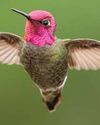
The World's Best-Known Hummingbird?
Intensively studied, the gem-like Anna’s hummingbird is a welcome visitor to the gardens of America’s most populous state: California. Bill Naylor investigates its life history
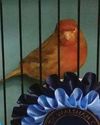
The charm of the English Cinnamon
Despite its long and complicated history, the true Cinnamon canary is still with us – in the hands of a tiny group of breeders. DONALD SKINNER-REID reckons it deserves wider appreciation
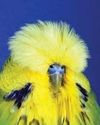
Spangles: a personal overview
FRED WRIGHT relates a budgie story of over-exploitation, consequent problems and abundant potential for the future

New converts to old breeds
Old and rare canaries have a reputation for adding fresh interest and challenge to the hobby. PETE HOOK and NICK JOY agree, and explain the birds’ charm to Dave Brown

Themed aviaries are a hit with the public at annual Stafford show
DECORATIVE AVIARY DISPLAYS from a CBS and an online bird keeping advice group were voted in the top three by visitors for the inaugural Stafford Aviary Competition.
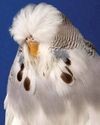
Pieds with potential
More than just a lesser variety, the dominant pied will introduce challenge and change into most studs, reckons CLIVE WAKEMAN. Here he discusses pairings to try and others to avoid

Club News
Welcome to the club and show pages – the bit that’s all about you Results: convention, specialist & rare and Breeder of the Year

Canaries Month by Month:
With Christmas around the corner, BRIAN KEENAN is well into his winter programme, and reckons he might deserve a nice outcross
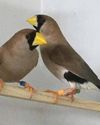
Smart Choice, Docile Nature
Dave Brown welcomes the masked grassfinch to his birdroom and shares advice on this lovely Australian species
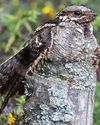
The truth about the ‘flying toad'
Odd local names and weird superstitions can’t hide the beauty and elegance of the nightjar, a species that has made a fascinating subject in a few zoo collections, reveals BILL NAYLOR